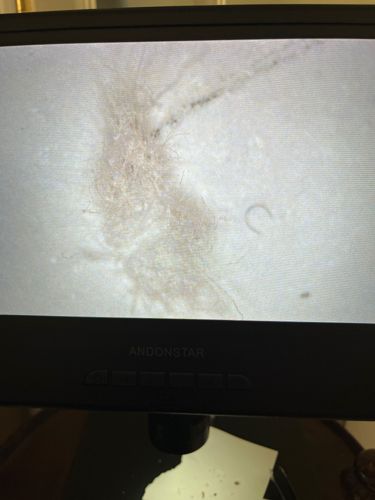Dust Mite
Scientific Name: Dermatophagoides spp.
Order & Family: Order Astigmata, Family Pyroglyphidae
Size: 0.2-0.3 mm (microscopic, not visible to the naked eye)

Natural Habitat
Human dwellings, especially beds, carpets, upholstered furniture, and clothing. They thrive in warm, humid environments.
Diet & Feeding
Dead skin cells (dander) shed by humans and pets. They do not bite or burrow into skin.
Behavior Patterns
Dust mites are scavengers that feed on organic detritus. They do not drink water but absorb moisture from the air. Their life cycle includes egg, larval, nymphal, and adult stages, lasting typically 1-3 months. They reproduce quickly under favorable conditions.
Risks & Benefits
Potential risks include triggering allergic reactions and asthma in sensitive individuals due to their fecal matter and body fragments. They are not known to directly transmit diseases. There are no direct benefits to humans, but they play a role in decomposition of organic waste in their micro-habitat.
Identified on: 9/20/2025